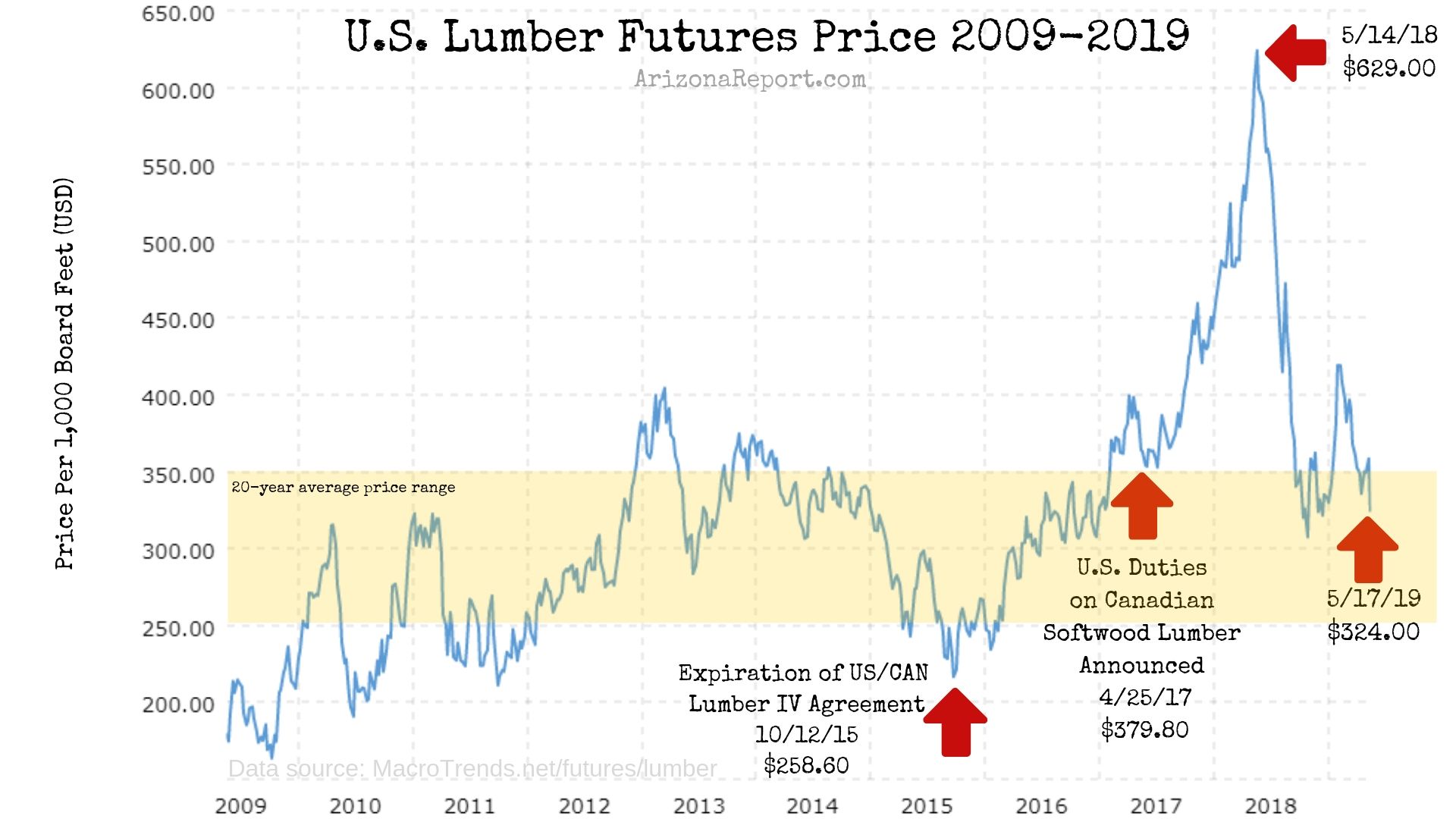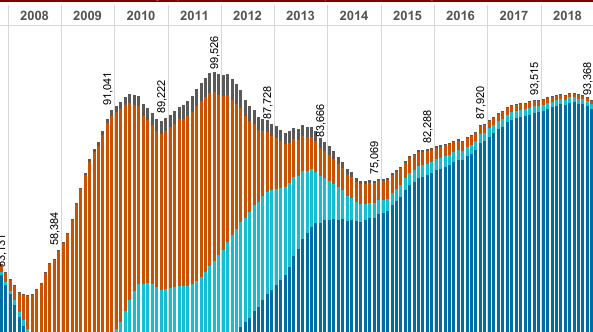- Fountain Hills Ties as Safest Zip Code in Phoenix - Oct 14, 2019
- How Many Single-Family Homes in Maricopa County? - Oct 13, 2019
- Investing in Multi-Family Real Estate in Your 20s - Oct 9, 2019
Lumber is one of the most significant costs of new home construction. It represents 18.0% of the average residential construction budget. Structural wood components command a larger share of the builder’s expenditures than almost any other line item, except land and interior finishes.
Exactly one year ago, in May 2018, U.S. homebuilders were straining under record-high lumber prices. A perfect storm of low rates, post-recession homebuyer demand, Canadian wildfires, railroad capacity bottlenecks, and an international trade dispute fueled the dizzying climb of lumber futures. In 2017, industry experts were prognosticating about how prices would negatively impact the homebuilding industry for years to come.
More expensive to build
The short term effects were painful for home builders. “Record-high lumber prices have added nearly $9,000 to the price of a new single-family home since January 2017,” said NAHB Chairman Randy Noel in a June 2018 press release. That was at the peak of the lumber futures market. The National Association of Home Builders (NAHB) is a trade association for 140,000 home builders and remodelers.
Today, the numbers look a lot rosier for builders. Lumber futures prices have returned to a price channel between $250 and $350 where they have spent much of the prior 20 years. Lumber futures are expressed as a dollar amount per 1,000 board-feet.
Oh, Canada.
High lumber prices took a sharp turn even higher two years ago when President Donald Trump announced import duties on Canadian softwood lumber products in April 2017. Softwood lumber is made from pine, spruce, red cedar and fir. It is fast-growing and well suited for the homebuilding industry.
At the center of the dispute was the U.S. assertion that the Canadian timber industry had been dumping Canadian softwood on to the U.S. market for years. The dispute between the U.S. and Canada has been ongoing since the early 1980s when the U.S. first considered measures to prevent American firms from being undercut.
Canadian timber firms harvest lumber from land owned by the provincial governments, unlike American firms that harvest from private land and have higher production costs. The Canadian provincial governments also set lumber prices, not the open market. Lumber products from north of the border are heavily subsidized. The new import duties, averaging around 21%, were imposed to level the playing field for U.S. lumber mills. But that also meant that U.S. new home prices would likely climb. They did.
Before the import duties, the U.S. relied on Canadian lumber to satisfy about 42% of its needs. By 2018, that number had dropped to 38%. After the tariffs, struggling wood mills in the U.S. began to come back online to meet demand. This mill in Montrose, Colorado was almost shuttered in 2012. It is now expanding.
In just 5 months, the price of lumber futures was cut in half. This happened for several reasons. Less than a year ago, forecasts projected that 2018 would yield the largest U.S. timber crop in over 20 years. Then the prospect of higher mortgage rates in early summer 2018 dampened enthusiasm for home start projections.
Cheaper homes now with cheaper lumber?
The median new home price for greater Phoenix is currently $320,000. Prices and starts for newly-built homes have continued to rise despite falling lumber costs. Builders might be more profitable than 12 months ago. However, other challenges for the industry remain even though the high cost of lumber is in the rearview mirror.
A lack of skilled trade labor has plagued Arizona homebuilders since the Great Recession sent workers packing for other industries. That was a time when homebuilders closed their doors en masse, merged with competitors or shifted into the remodeling business. A scarcity of ready-to-build land is also putting pressure on Phoenix homebuilders. The availability of vacant developed lots in 2019 here is 52% below its 2008 peak.
Greater Phoenix new home starts totaled just under 20,000 for 2018.
My father’s father died when he was a teenager, and dad went to work to support his mother and two siblings as a carpenter and as a builder’s mule, hauling carts of lumber to construction sites when it was too icy for the mules to climb the hills.
– Maryanne Trump Barry, former United States Circuit Judge and elder sister of President Donald Trump







